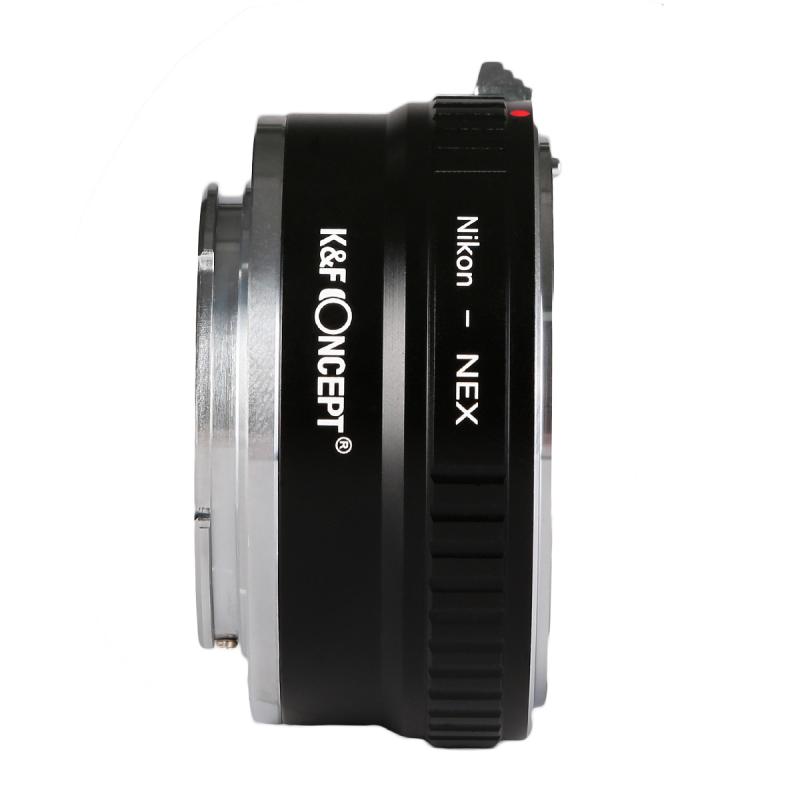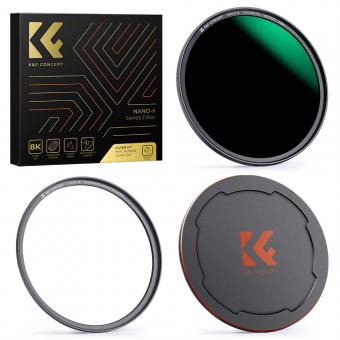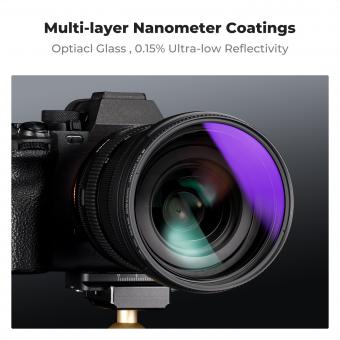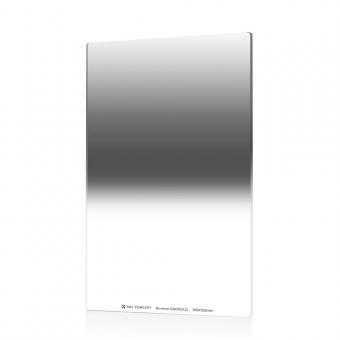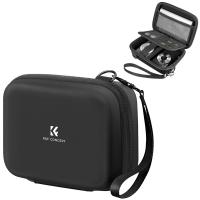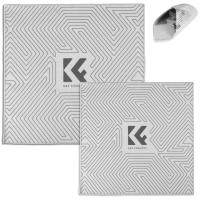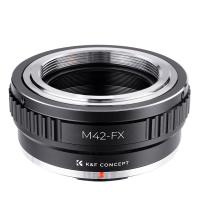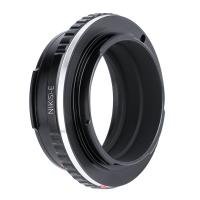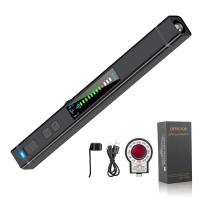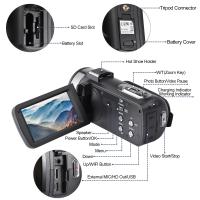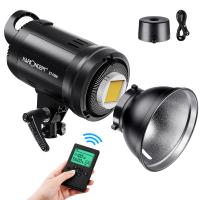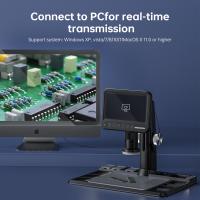How To Take The Inverted Filter Off Camera ?
To remove an inverted filter from a camera, follow these steps:
1. Turn off the camera and locate the filter on the lens.
2. Carefully hold the camera with one hand and use the other hand to grip the filter.
3. Rotate the filter counterclockwise to loosen it from the lens.
4. Once the filter is loose, continue rotating it until it can be completely removed from the lens.
5. Inspect the lens to ensure that no residue or debris from the filter remains.
6. If needed, use a lens cleaning cloth or solution to clean the lens surface.
7. Once the lens is clean, you can either attach a new filter or use the camera without a filter.
Remember to handle the camera and filter with care to avoid any damage.
1、 Detaching the inverted filter from a camera lens
To detach the inverted filter from a camera lens, follow these steps:
1. Turn off the camera: Before attempting to remove the inverted filter, make sure the camera is turned off to avoid any accidental damage.
2. Locate the filter: Identify the inverted filter on the camera lens. It is usually a circular or square-shaped attachment that screws onto the front of the lens.
3. Check for any locking mechanism: Some inverted filters may have a locking mechanism to secure them in place. Look for any switches or buttons that need to be pressed or rotated to unlock the filter.
4. Unscrew the filter: If there is no locking mechanism, simply rotate the inverted filter counterclockwise to loosen it. Be gentle but firm to avoid damaging the lens or the filter itself. If the filter is stuck, try using a rubber grip or a filter wrench for better grip.
5. Remove the filter: Once the inverted filter is loose, carefully lift it off the lens. Be cautious not to touch the lens surface or expose it to dust or fingerprints.
6. Clean the lens: After removing the inverted filter, it is a good idea to clean the lens surface with a microfiber cloth or lens cleaning solution to ensure optimal image quality.
It is worth noting that the process of removing an inverted filter may vary slightly depending on the specific camera model and the type of filter being used. Therefore, it is always recommended to consult the camera's user manual for detailed instructions or seek assistance from a professional if needed.
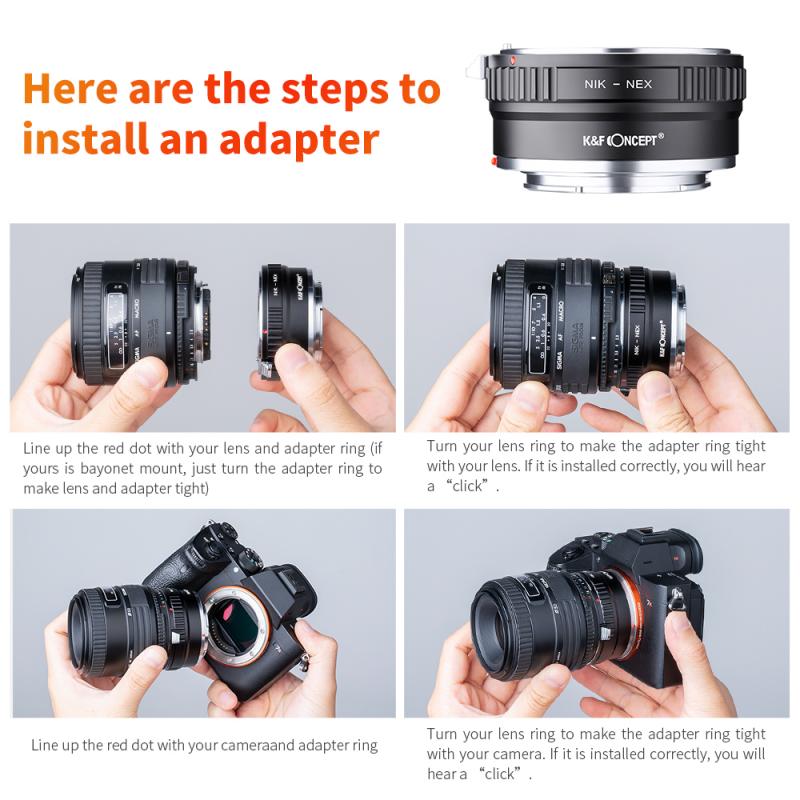
2、 Removing the inverted filter from a camera body
To remove the inverted filter from a camera body, follow these steps:
1. Turn off the camera and remove the lens: Before attempting to remove the inverted filter, make sure the camera is turned off and the lens is detached. This will prevent any accidental damage to the camera or lens.
2. Locate the inverted filter: The inverted filter is typically located near the camera's sensor. It is a small, rectangular-shaped component that can be easily identified.
3. Use a small screwdriver: Carefully unscrew the screws that are holding the inverted filter in place. Be gentle and make sure not to strip the screws.
4. Remove the inverted filter: Once the screws are removed, gently lift the inverted filter out of the camera body. Be cautious not to touch the sensor or any other delicate components.
5. Clean the sensor: After removing the inverted filter, it is recommended to clean the camera's sensor using a specialized sensor cleaning kit. This will ensure optimal image quality and prevent any dust or debris from affecting your photos.
It is important to note that removing the inverted filter from a camera body may void the warranty and should only be done by experienced individuals. Additionally, it is advisable to consult the camera's manufacturer or a professional technician for guidance specific to your camera model.
Please keep in mind that camera technology is constantly evolving, and the latest point of view may vary. It is always recommended to refer to the camera's user manual or seek professional assistance for the most up-to-date information.

3、 Steps to disassemble an inverted filter from a camera
To remove an inverted filter from a camera, follow these steps:
1. Power off the camera: Before attempting any disassembly, ensure that the camera is turned off to avoid any potential damage or accidents.
2. Remove the lens: Unscrew the lens from the camera body by twisting it counterclockwise. Set the lens aside in a safe place.
3. Locate the filter: The inverted filter is typically positioned inside the camera body, near the lens mount. It may be secured with screws or clips, depending on the camera model.
4. Remove the screws or clips: Use a small screwdriver or a suitable tool to carefully remove the screws or unclip the clips that hold the filter in place. Take note of the location and number of screws or clips for reassembly later.
5. Gently lift the filter: Once the screws or clips are removed, carefully lift the filter out of the camera body. Be cautious not to touch the sensor or any other delicate components inside the camera.
6. Clean the filter (optional): If the filter appears dirty or dusty, you can use a soft, lint-free cloth or a specialized camera cleaning solution to gently wipe it clean. Avoid using excessive force or harsh chemicals that could damage the filter.
7. Reassemble the camera: After cleaning or replacing the filter, carefully place it back into the camera body and secure it with the screws or clips. Then, reattach the lens by twisting it clockwise until it is securely in place.
It is important to note that disassembling a camera can be a delicate process, and if you are unsure or uncomfortable with doing it yourself, it is recommended to seek professional assistance from a camera technician. Additionally, always refer to the camera's user manual for specific instructions and precautions related to your particular camera model.

4、 Techniques for removing an inverted filter from a camera
To remove an inverted filter from a camera, follow these steps:
1. Power off the camera: Before attempting to remove the filter, ensure that the camera is turned off to avoid any potential damage.
2. Locate the filter: Identify the location of the inverted filter on your camera. It is typically found at the front of the lens.
3. Use a lens wrench or filter removal tool: These tools are specifically designed to safely remove filters from camera lenses. Insert the wrench or tool into the filter's notches and gently twist counterclockwise to loosen it.
4. Apply gentle pressure: If the filter is stuck, try applying gentle pressure while twisting the wrench. Be cautious not to exert too much force, as it may cause damage to the lens or filter.
5. Clean the lens: Once the filter is removed, use a lens cleaning solution and a microfiber cloth to clean the lens surface. This will ensure optimal image quality.
It is important to note that the latest point of view regarding inverted filters is that they are not recommended for use. Inverted filters were once popular for achieving certain creative effects, but advancements in digital photography and post-processing software have made them largely obsolete. Instead, photographers now have more control over their images through software editing, allowing them to achieve similar effects without the need for physical filters. Therefore, it is advisable to explore digital alternatives rather than using inverted filters on cameras.
